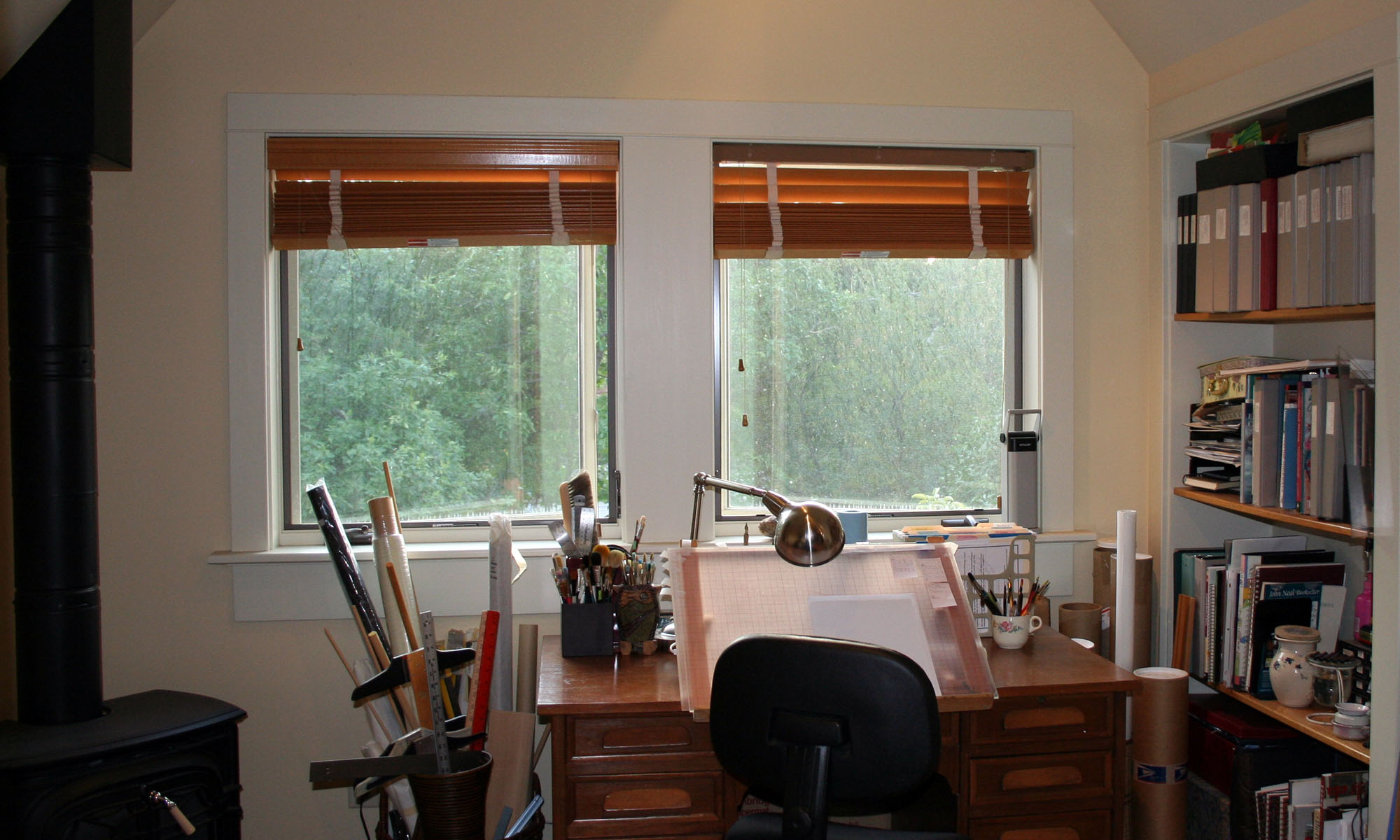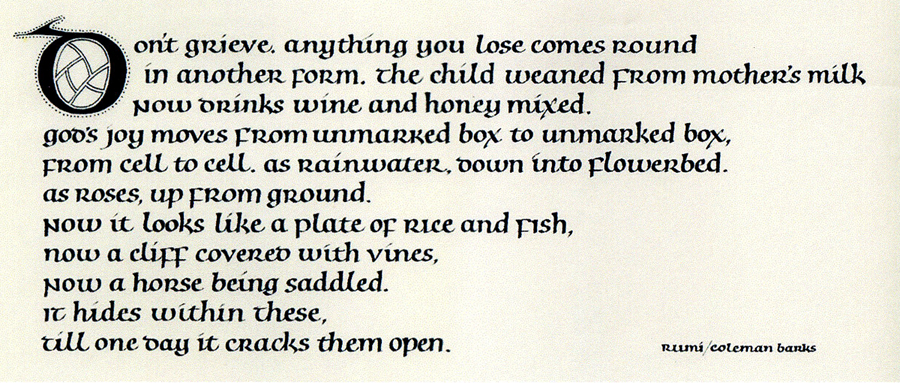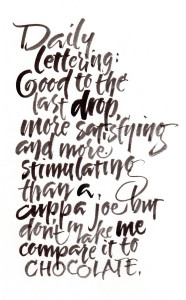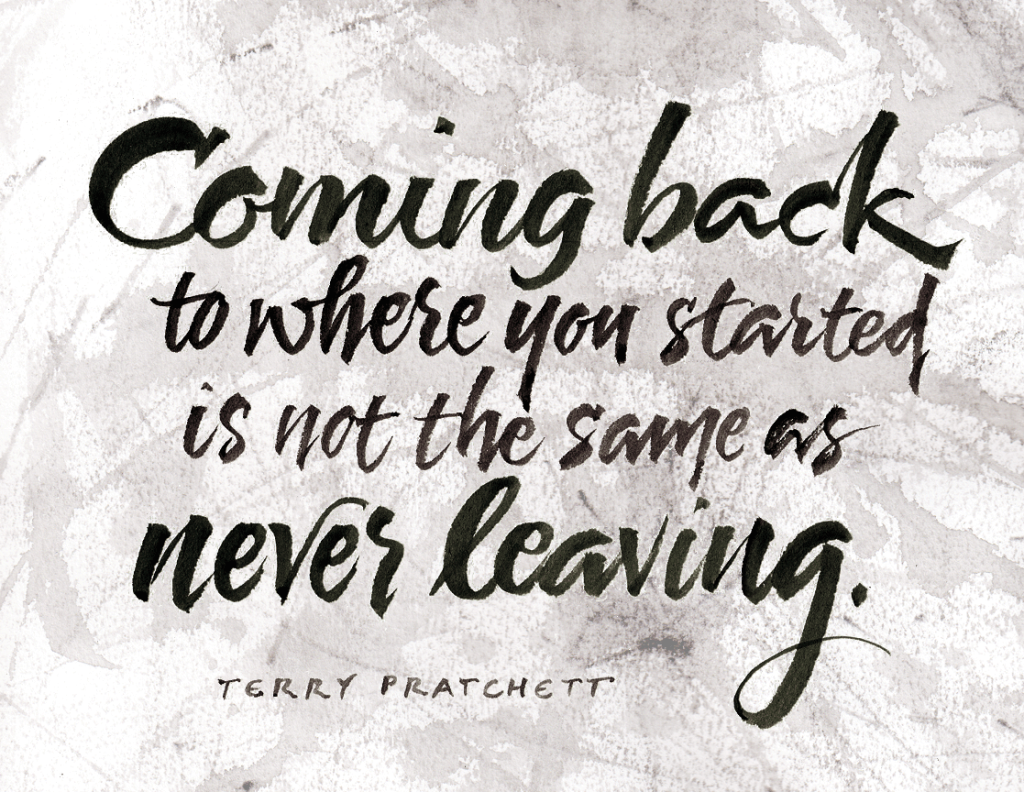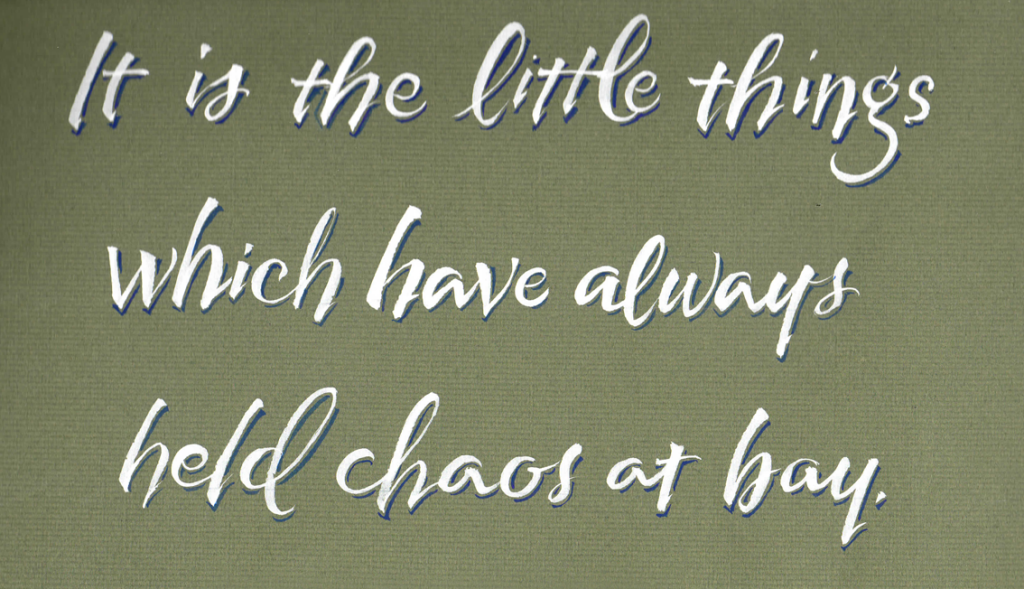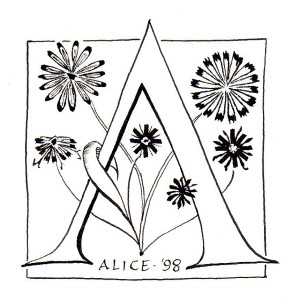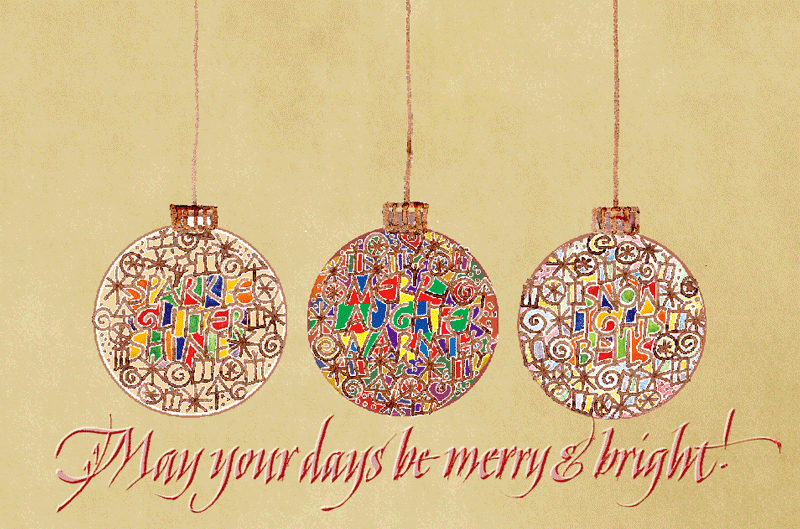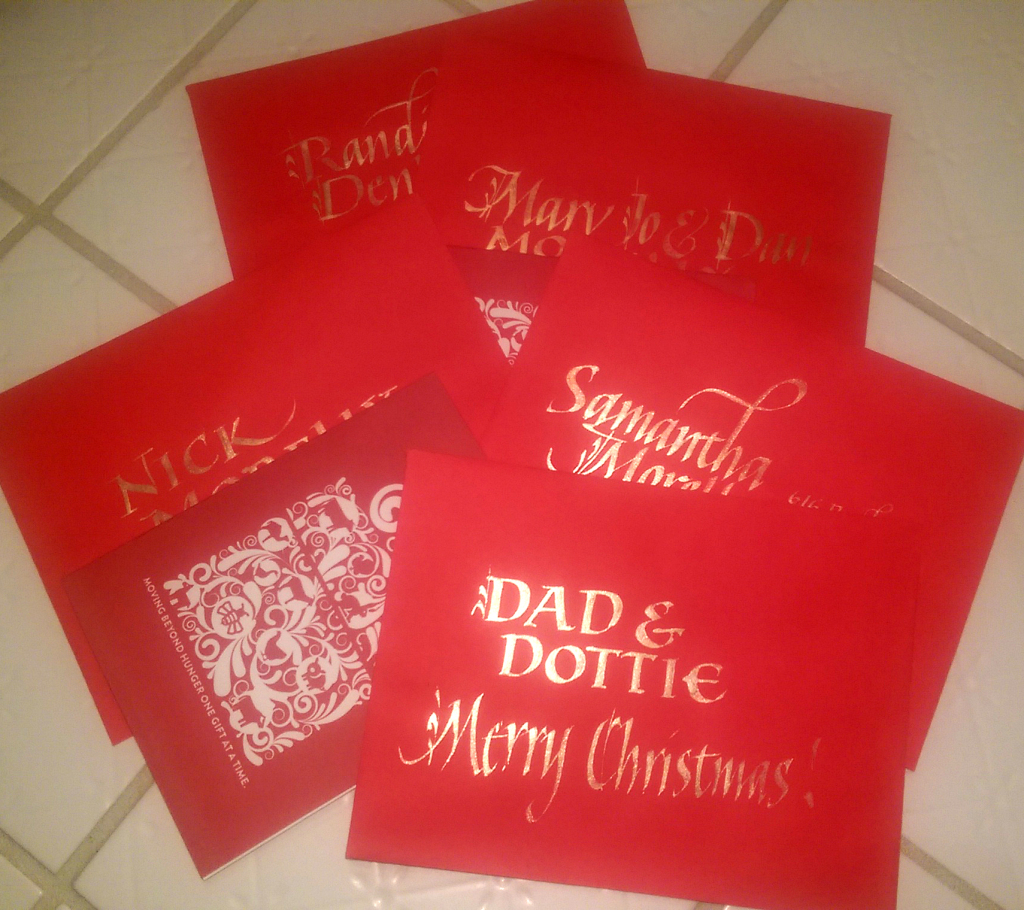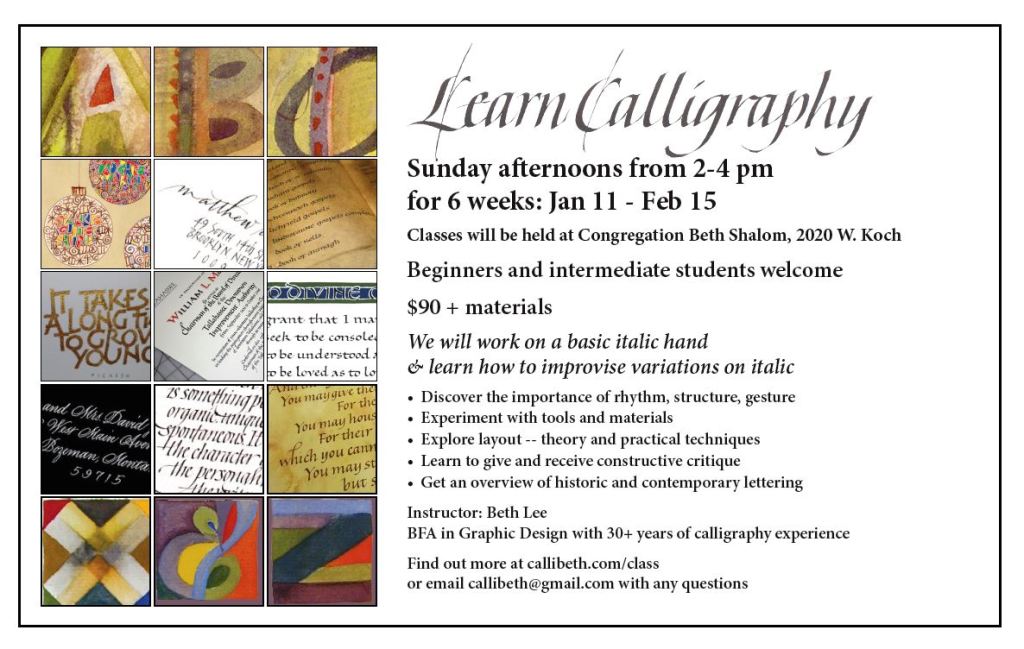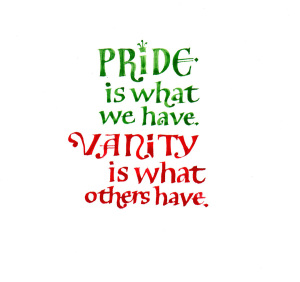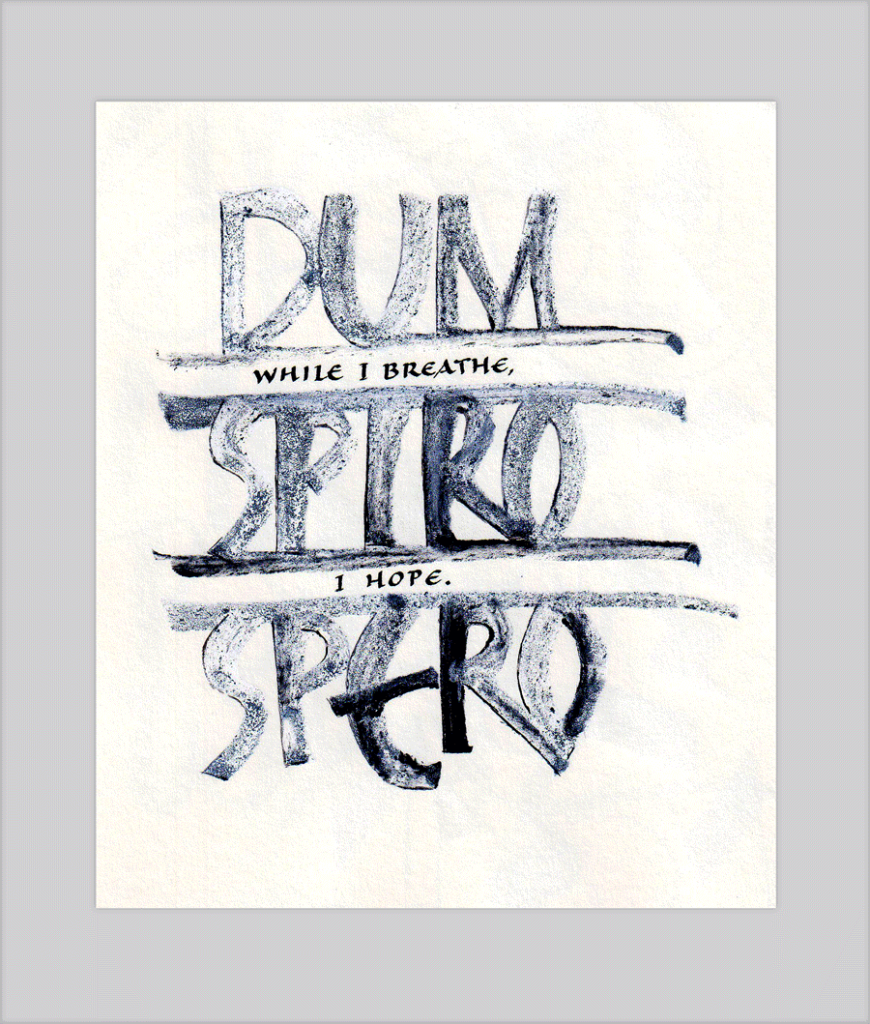B is for Brody Neuenschwander.
He and Thomas Ingmire taught a week-long workshop entitled “Textual Reverberations” at Camp Cheerio in September 2000.
We spent time each morning looking at text-based art by Jenny Holzer, Bruce Nauman, Gillian Wearing and the YBAs (Young British Artists), etc. I believe this was my first introduction to the work of Hans Joachim-Burgert. Here I finally began to get a big picture of the continua of lettering styles, traditions, and influences which included graphic design, the Arts & Crafts Movement, modern conceptual art and so on. Many of the ideas I began to look at after this workshop went into a paper I wrote in an art history class nearly 10 years later, entitled “Text and Image”.
In the workshop we developed a book that intertwined three quotes in three styles of lettering, looking at ways to handle text differently throughout the book. We morphed text, changed up the rhythm, altered the orientation, and much more. Today’s lettering reflects combines three lettering styles, but the text is all one quotation rather than three. Of these three, only the top line resembles one of my three lettering styles, although the style in the book was less linear and less legible.

The workshop part of this class was, in many ways, over my head at the time, although fortunately I didn’t have the good sense to recognize then. But I learned a lot, and continued to learn from that workshop for many years afterwards.
Like this:
Like Loading...
